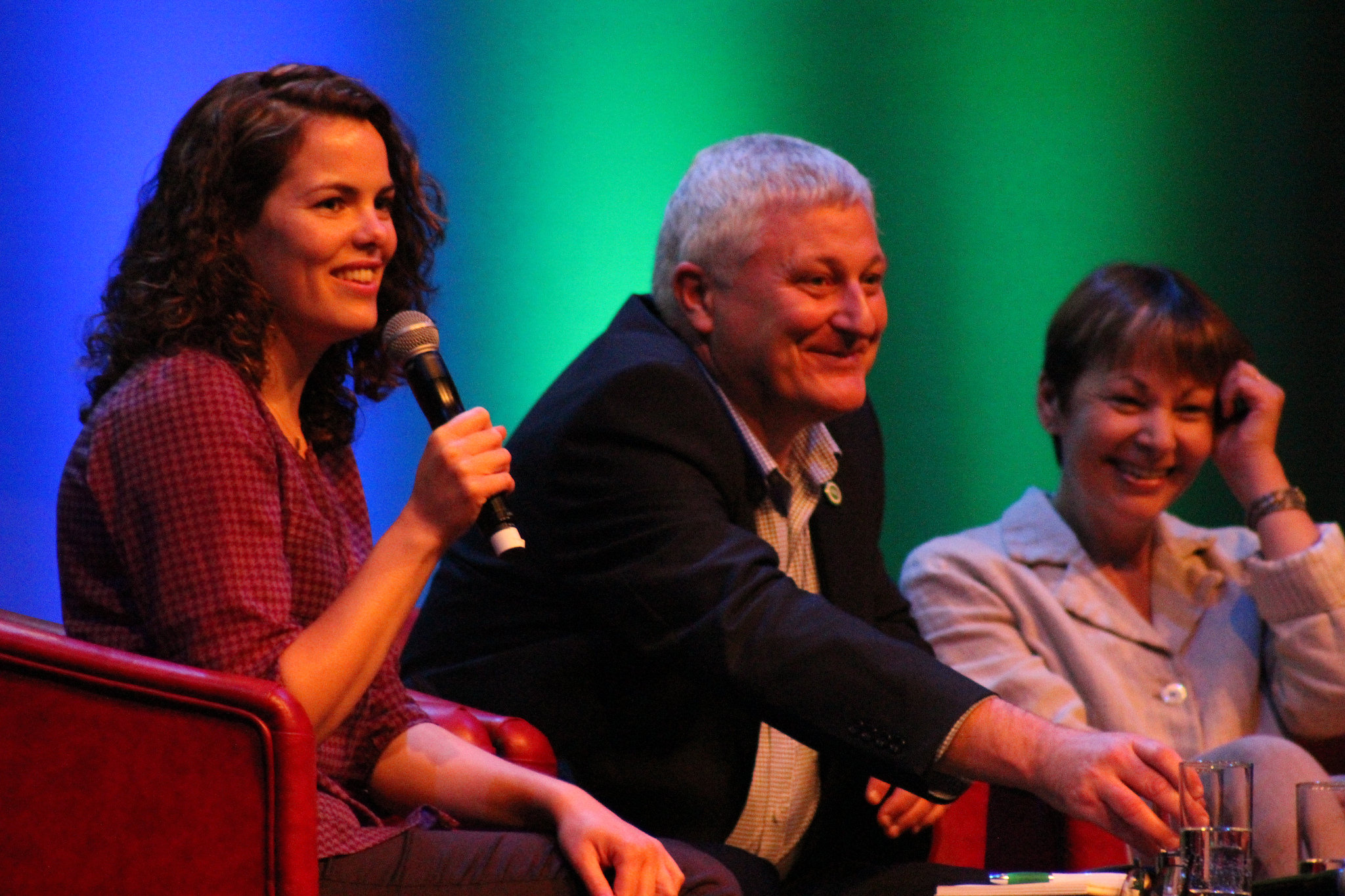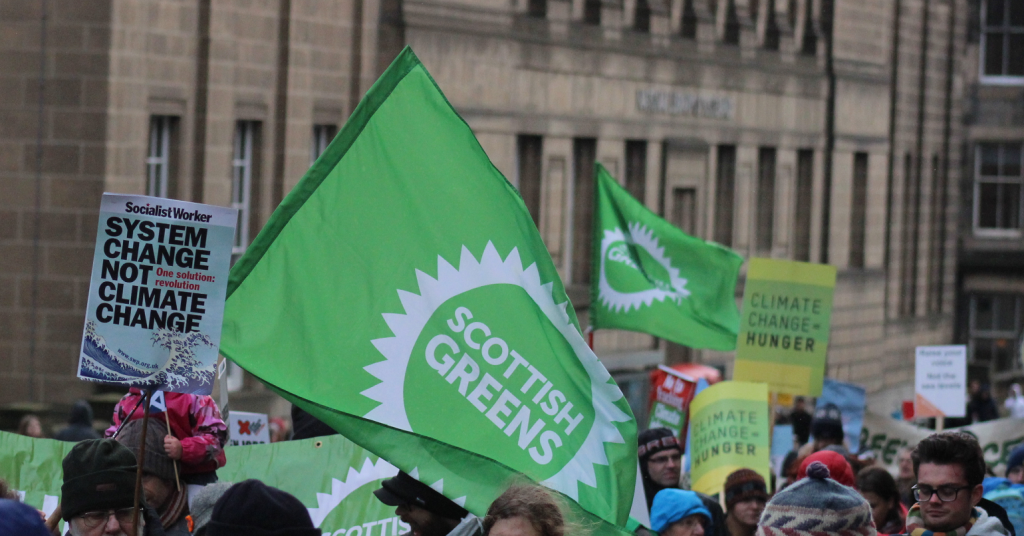With a historic election looming, what should Green strategy be?

For Greens, the snap election has in a way made things easier. The biggest debate in the party in England and Wales of late has been around the question of a progressive alliance and it’s a conversation which has murmured in the Scottish Greens too: should Greens stand aside in a few key marginals in order to help other parties beat the Tories?
With an election in 2020, this would have been a notable sacrifice: reducing the number of people who could stand as Green candidates, and potentially some broadcast coverage, for the greater good of unseating some Conservative MPs and hoping to bring down the Tory government and securing some long term changes, such as a new electoral system.
But the reality with the snap election announced this week is that Greens won’t be able to scramble to find candidates in every seat. On the other hand, the chaos in Labour and the fact that the Lib Dems haven’t yet built back their former organisational strength could allow the party, with careful targeting, to pick up an extra MP, or even, just possibly, two.
Given the party is likely not to stand candidates in a number of seats in this election anyway, the only real question is whether it ought to think strategically about where it doesn’t stand as well as where it does. If there are to be no Green candidate in twenty percent of the seats in the UK anyway, why not think a little about which seats to avoid, and attempt to at the very least help lessen the majority of this terrifying Tory government?
In England and Wales, though, there is less debate to be had: the party there backed such an approach at its spring conference this year.
In Scotland, there is a little more of a debate and for understandable reasons. The SNP have been in government for ten years, and for many in the Scottish Greens, much of that decade has been spent in frustration with a ruling party which talks big but delivers small, which says many of the right things, but often feels like it’s only willing to make tiny moves in the right direction: and which sometimes does things which we would actively disagree with.
At the same time, Greens and the SNP stood together in the independence referendum and in the European referendum. In the Scottish budget this year, Green MSPs negotiated changes which meant slightly higher taxes for the wealthiest people and zero net cuts to local authority budgets, and voted for it.
If you talk in any way to a decent number of Scottish voters, then you soon find someone accusing the party of being too close to the SNP. And I can see the temptation to think that the way to respond to this is to be more vocal in opposition to them: to make sure that Greens always stand against the SNP and never acknowledge that on the big constitutional issues that will shape this election, we are on the same side.
I think this is a mistake.
Scottish politics is polarising around the union/independence. Most of the people who think that Greens are too close to the SNP are almost certainly people who oppose independence and so are very unlikely to vote Green in future. Very few of them will have voted Green in the past (very few people did). Many of them will be the same people as those who used to squint at me when I was out canvassing and ask if I was from Greenpeace. But even those who did vote Green before were mostly people the party started to lose in 2014, and won’t get back for a long time.
On the other hand, there is a huge pool of new potential voters. These are the people who swung towards independence, and, often, shifted left, over the course of the referendum campaign. These people – almost half of the Scottish electorate and significant majorities of the younger and city-centre demographics which tend to vote Green – shifted from either the Lib Dems or Labour to the SNP, but are in my experience open to be persuaded to back other pro-independence parties, particularly the Greens. But the way to win them is not to be seen as the opposition to the SNP, but as the people pushing them to be bolder.
When I ran Green campaigns in Oxford, we won wards off Labour with a simple mantra: that we didn’t oppose Labour, we opposed the Tories better than Labour. When we did criticise Ed Miliband’s party, our rule was that the tone had to be ‘more in sorrow than in anger’. And this worked beautifully. Most Labour voters are used to hearing their party being attacked, and they simply shut down and stop listening if you join the barrage. If you show yourself to be against Labour, you are against them. But if you express their sadness about the decline of Labour, then they pay attention.
The same applies to the SNP among Yes voters. If Greens try to paint themselves as the opponents of the SNP, they will be crushed. But the most successful conversations I had on the doorsteps in Dundee in 2016 were where I said that the SNP would be returned as the government, and I’m fine with that. But I want to give them a kick up the bum, get them to use their new powers to tax the wealthy rather than pass on the Tories cuts, etc.
In the coming election, what that means is that the Scottish Greens need to find a couple of exciting and positive policies that the SNP can’t match, but which most of their voters like, and shout about them. Beyond that, the party should be honest about the fact that it does agree with the SNP on the big constitutional questions which will form such a major part of the debate. And I see no reason at all why it makes sense to prioritise running in seats where the deposit was lost last time, and which are Tory/SNP marginals.
Greens are radicals. Green politics is distinct from the politics of any other parties in these islands. It brings a powerful analysis of what’s gone wrong in the world and important proposals as to how to fix it. Standing in every seat doesn’t help prove that. What does is talking clearly about it in ways that chime with voters daily lives; picking a couple of simple messages which help reveal broader truths and repeating them until everyone can remember them, and then repeating them some more.




Good article – but not a good headline in my view.
Why would the election be historic? Let’s be honest, the tendency is for politicians and journalists to call the current election the most important of all – and then to do the same again in a few years time.
This year the main issue is Brexit, and what difference would a different election outcome make? I mean, would Labour stop the Brexit? What would they do if they won?? We, the Nats and the LibDems would, but we won’t win together. And would a Labour minority government do???
So Brexit it is. But the seed for rejoining are already sown within Brexit. Brexit and populist successes have already had an effect within Europe – and that is that the EU is getting more popular again. Furthermore Brexit will be extremely painful for Britain.
And these effects will surely be very noticeable in 2022. So is this really the an historic election, or does May just another Major who will be found out and villified by history?
To be clear, I don’t think the election is unimportant, and many people will get hurt badly by another 5 years of right-wing Tory government. But nothing is unreversable.
Good stuff Adam. Interested to hear more about this powerful analysis you mention in the final paragraph, as well as important proposals. Is there a place they are stated clearly?
Good analysis I certainly agree we have to make the most of this chance & only stand in those seats where we the Green Party stand a chance of getting a win or other good positions & importantly saving the £500 deposit, if we are clever in planning our strategy we could gain 2 or more seats as well as Brighton, Bristol & Norwich ?? we are strong in some other areas of the country & really must point out the DANGERS of an overstrong Tory win apart from the undesireability of their strong leave thinking?? I beleive the MPs who were remainers are lilly livered backboneless turncoats!!!